City and county government agencies protect and serve their communities in so many ways, working hard to improve their communities and interact with citizens, doing their best to make their cities and towns a safe, healthy, enjoyable place to live.
Handling these responsibilities while also abiding by the many regulations, laws, ethical considerations, and measures for oversight can prove challenging. This puts compliance at the forefront of risk reduction and operating an efficient, high-quality government at all levels.
Maintaining accurate records and current policies and procedures lies at the heart of compliance efforts, as government workers juggle everything from building permits and birth certificates to waste-management contracts and property tax records. And every step of the way, local governments must ensure that their workers follow the rules while still serving the public.
Increasingly tight budgets mean government agencies take a do-more-with-less approach while still operating with transparency and integrity worthy of citizen’s trust.
As local governments seek to protect, serve, reduce risk, and stay in compliance with limited time and money, many are turning to technology solutions, especially when it comes to document management software.
Surprisingly, a tech-based solution isn’t just about keeping accurate, accessible records, although that is vitally important. It’s also about improving efficiency within local governments, staying in compliance, operating ethically, and providing better customer service to earn a deep trust from the communities they serve.
It’s no secret that local governments use a huge amount of paper as they continuously issue permits, licenses, public records, contracts, and many other public-facing documents. On top of this, governments also produce a lot of internal documents such as employee handbooks, memos, policies, and more.
Relying on a paper-based system for crucial compliance documents poses several problems:
It’s a manual process
Using paper requires people to collect, file, and then do something with the information they receive. Nothing is automated, the start-to-finish process eats up a lot of time, and it requires an enormous amount of space to store all of it.
Plus, as information physically travels from place to place, it sometimes gets lost in the paper shuffle. It’s easy to see how important information can inadvertently fall through the cracks.
It’s expensive
The cost of the paper itself (around $800 per employee per year) is only the beginning. When you factor in the purchase and maintenance of printers, ink refills, and related supplies, it starts adding up very quickly.
And don’t overlook the cost of misfiled documents, with estimates of $125 per misfiled document, plus up to $350 in man hours to replace the lost file.
Finally, paper documents face the risk of getting damaged or destroyed. A fire, flood, or natural disaster could literally wipe out years’ worth of documentation.

It’s bad for the environment
Experts estimate that each employee consumes roughly 1.2 trees worth of paper each year, adding up to about 10,000 pieces of paper annually. It’s a trickle-down effect with huge impact.
According to Forest Ethics, more than 40% of the world’s industrial logging goes into making paper. In turn, logging contributes to deforestation, which drives climate change and destroys animal habitats. The pollution costs involved in manufacturing and transporting all that paper also delivers a serious blow to the environment.
For example, the paper industry contributed 20% of the toxic chemicals released into the air in the U.S. in 2015 alone. And the harmful chemicals often found in ink cartridges can leech into the soil and water if they end up in landfills.
Finally, estimates show that paper accounts for roughly 16 to 25% of landfill waste and about 33% of municipal solid waste. It’s not a pretty picture.
It’s difficult to recall information
When dealing with a paper-based document management system for policies and procedures, you must physically go find the information you need and/or transfer it to a digital source, both of which takes time and creates duplicate work.
From a compliance perspective, keeping paper records of signatures or agreements can make proving that out very difficult down the road, if needed. Think of how hard it would be to remember who signed off on a particular policy, when they signed it, and which version they signed.

With the problematic paper-based approach to document management in local government, what’s the solution? Three words: document management software.
Getting control of your documents – especially critical compliance documents – helps reduce risk and improve compliance throughout your organization.
And when you move to a document management software for compliance purposes, it has its own positive trickle-down effect. It is automated, efficient, cost-effective, environmentally friendly, and easily accessible.
Central repository
Forget thousands of paper documents scattered throughout your organization (along with the risks and hassles of managing them).
With local government software, you store all of your compliance documents in a single, central repository, making information easy to locate.
This provides a single source of truth to find all of your documents, both from a compliance management perspective as well as from the employees’ perspective. Rather than wasting time searching in mammoth filing cabinets (perhaps even housed in different buildings), employees can instantly access key documents such as policies, procedures, and other compliance-related content and training.
Plus, a cloud-based document management software like PowerDMS provides a secure place to store and manage your files. If disaster strikes, you can rest assured your critical information is protected.
Modern policy and procedure handbook
Traditionally, new employees receive a printed manual on their first day on the job, sign the back to prove they received a copy, and then promptly stick it in a desk drawer only to be looked at in the rarest circumstances.
For 21st century governments, this simply doesn’t cut it anymore.
With software solutions, like PowerDMS, to provide a modern, accessible policy manual that is regularly updated, completely searchable, and accessible 24/7 by every employee. Documents are always up to date and there is never a question about which version or wording of a policy employees are reading.
